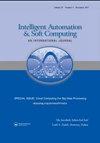矩形布局问题的一种省时的探索性算法
IF 2
4区 计算机科学
Q2 Computer Science
引用次数: 1
摘要
今天,资源浪费被认为是不同行业最重要的挑战之一。在这方面,矩形包装问题(RPP)可以显著影响企业的时间和设计问题。在本研究中,主要目标是创建一组不重叠的矩形,使它们在具有指定宽度和无限高度的矩形板内具有特定的尺寸。接下来的挑战是np完全问题。np完全问题,任何一类仍然没有有效解的计算问题。大多数实质性的计算机科学问题,如旅行推销员问题、可满足性问题(有时称为命题可满足性问题,缩写为SAT或B-SAT)和覆盖图形的问题都属于这一类。从本质上讲,通过强调线性计算时间来确定具有最高资源利用率的最佳安排是复杂的。本文介绍了一种省时的探索性RPP算法,包括最低前线策略和最佳拟合算法。实验结果表明,该算法具有简单、省时的优点。我们的评估表明,该模型的利用率为94.37%,优于其他模型的利用率分别为87.75%、50.54%和87.17%。因此,与其他算法相比,该方法能够在0.023 s的运行时间内实现更好的利用率,比其他算法快得多。本文章由计算机程序翻译,如有差异,请以英文原文为准。
A Time-Efficient and Exploratory Algorithm for the Rectangle Packing Problem
Today, resource waste is considered as one of the most important challenges in different industries. In this regard, the Rectangle Packing Problem (RPP) can affect noticeably both time and design issues in businesses. In this study, the main objective is to create a set of non-overlapping rectangles so that they have specific dimensions within a rectangular plate with a specified width and an unlimited height. The ensued challenge is an NP-complete problem. NP-complete problem, any of a class of computational problems that still there are no efficient solution for them. Most substantial computer-science problems such as the traveling salesman problem, satisfiability problems (sometimes called propositional satisfiability problem and abbreviated SAT or B-SAT), and graph-covering problems are belong to this class. Essentially, it is complicated to spot the best arrangement with the highest rate of resource utilization by emphasizing the linear computation time. This study introduces a time-efficient and exploratory algorithm for the RPP, including the lowest front-line strategy and a Best-Fit algorithm. The obtained results confirmed that the proposed algorithm can lead to a good performance with simplicity and time efficiency. Our evaluation shows that the proposed model with utilization rate about 94.37% outperforms others with 87.75%, 50.54%, and 87.17% utilization rate, respectively. Consequently, the proposed method is capable to of achieving much better utilization rate in comparison with other mentioned algorithms in just 0.023 s running-time, which is much faster than others.
求助全文
通过发布文献求助,成功后即可免费获取论文全文。
去求助
来源期刊

Intelligent Automation and Soft Computing
工程技术-计算机:人工智能
CiteScore
3.50
自引率
10.00%
发文量
429
审稿时长
10.8 months
期刊介绍:
An International Journal seeks to provide a common forum for the dissemination of accurate results about the world of intelligent automation, artificial intelligence, computer science, control, intelligent data science, modeling and systems engineering. It is intended that the articles published in the journal will encompass both the short and the long term effects of soft computing and other related fields such as robotics, control, computer, vision, speech recognition, pattern recognition, data mining, big data, data analytics, machine intelligence, cyber security and deep learning. It further hopes it will address the existing and emerging relationships between automation, systems engineering, system of systems engineering and soft computing. The journal will publish original and survey papers on artificial intelligence, intelligent automation and computer engineering with an emphasis on current and potential applications of soft computing. It will have a broad interest in all engineering disciplines, computer science, and related technological fields such as medicine, biology operations research, technology management, agriculture and information technology.
 求助内容:
求助内容: 应助结果提醒方式:
应助结果提醒方式:


